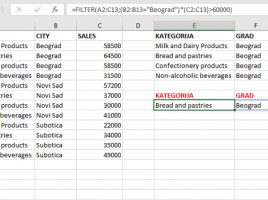
UNIQUE function
Sometimes you have repeating values in the column and you want to extract only their unique instances. The Remove Duplicates option is used to do this, and the UNIQUE is a new Excel function that has been built to perform the same thing. It generates a dynamic array with unique values, whether it contains text, numbers, dates …




